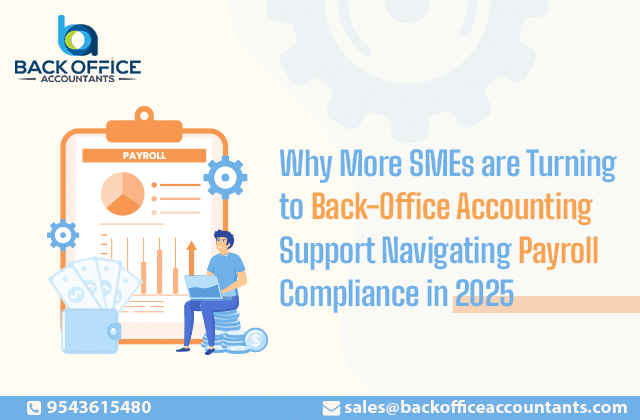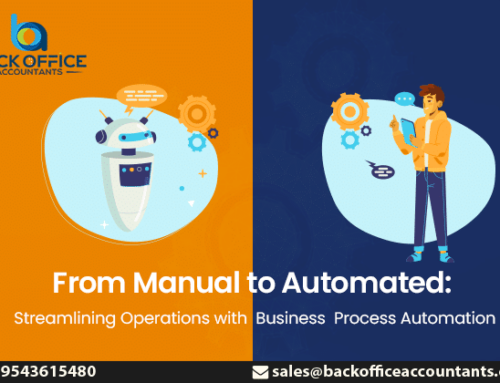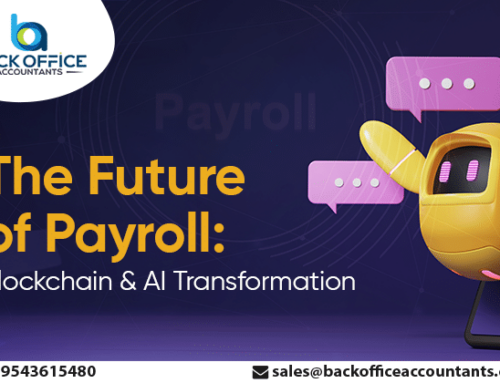For small and medium-sized enterprises, 2025 will likely be a pivotal year, particularly in terms of managing payroll compliance. As payroll compliance becomes challenging in 2025, more SMEs are relying on some back office accounting support.
Emerging Payroll Trends
The following are small business payroll outsourcing trends:
- Rise of Artificial Intelligence Automation
Artificial intelligence and automation are leading the way in revolutionizing payroll transformation. In fact, these technologies are fundamentally changing how companies process payroll. For example, AI takes on repetitive tasks like data entry and calculations, which not only slashes the time spent but also minimizes errors. Consequently, businesses can operate more efficiently and accurately, improving overall productivity.
If you need payroll reports generated, automation is set to help you ease these tasks and let your team focus on bigger priorities. For example, there are chatbots. This way, employees get an immediate answer on their wages, benefits, and tax holdings. No need to wait on HR before asking simple questions.
- Cloud Based Payroll
Payroll management is evolving fast, and one of the biggest trends for 2025 is the move to cloud-based payroll solutions. Why? They outperform older methods.
First, there is flexibility and accessibility. With cloud-based payroll, you can easily access your data from anywhere at any time. Additionally, there is scalability. As your business grows, your payroll requirements will expand accordingly. Moreover, with cloud-based systems, you can seamlessly add new features without the hassle of dealing with significant IT upgrades.
What about security? That’s covered, too. Cloud providers are data protection experts who use advanced security measures to protect data. There is also automation. Cloud-based payroll systems streamline processes, reduce errors, and save time.
- Real-time payroll processing
Real-time payroll is gaining momentum, and it’s easy to see why. Imagine being able to access your earnings as you earn them—no more waiting for payday.
This approach ensures employee satisfaction and financial well-being. Workers have greater control over their finances, helping them handle unexpected expenses or plan better for day-to-day needs.
- Enhanced security
Blockchain technology will gain traction in payroll management in 2025; it will have a completely new and secure payroll process. Blockchain is an open ledger to maintain and verify transactions. Blockchain reduces the risk of fraud or unauthorized tampering by providing an immutable record of all payroll compliance transactions.
Why SMEs are choosing Back Office Accounting Support
- Cost Efficiency
For SMEs, outsourcing back-office accounting is a wise and cost-effective decision. Businesses can hire seasoned professionals for a fraction of the price of hiring an in-house team, saving them from having to pay full-time salaries and benefits. Plus, many providers offer flexible, scalable back-office accounting support for SMEs, so you only pay for what is necessary.
- Focus on Core Operations
Handing over payroll management to the experts will give you extra time to grow the business. With fewer tasks weighing you down, you can focus on strategic goals and initiatives that drive productivity and scale operations.
- Access to Expertise and Tools
Outsourcing provides you with access to a team of experts who are not only knowledgeable about payroll compliance but also well-versed in compliance regulations, in addition to having access to cutting-edge software. As a result, they ensure that every calculation is accurate, taxes are submitted on time, and all regulations—both local and international—are met. Consequently, this level of experience reduces mistakes, mitigates risks, and helps maintain your business efficiency.
Steps to Transition
- Identify Your Needs
Start by pinpointing the payroll challenges your SME is facing. Are errors piling up? Are deadlines being missed? Or are you simply stretched too thin on resources? Knowing where it hurts will help you figure out what kind of support you need.
- Do Your Homework
Not all service providers are the same; therefore, it’s essential to take your time and find the right fit. To begin with, look into their track record, level of experience, costs, and the services they offer. Furthermore, check out reviews, ask for references, and, if possible, try a demo or trial to ensure it meets your needs.
- Smoothen the Transition
Switching to a back-office provider should come with a solid game plan. Think about data migration, setting up clear communication channels, and training your team on new workflows. A well-planned implementation will guarantee you a hassle-free transition.
- Keep an Eye on Results
Don’t just set it and forget it. Instead, track the impact of outsourcing on your business. For instance, are errors down? Additionally, are deadlines consistently met? Furthermore, how much time are you saving? By conducting regular evaluations, you can ensure the partnership stays on track and continues to meet your evolving needs.
Conclusion
Payroll compliance for SMEs 2025 is increasingly complex; Hence, SMEs increasingly recognize how essential it is to partner with back office accounting support providers. Furthermore, for those SMEs still managing payrolls internally, it is now time to explore the numerous benefits of outsourcing. By doing so, they can effortlessly navigate the complex compliance landscape.







